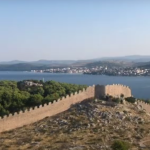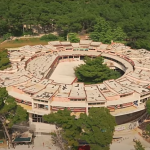For your daily dose of trivia, a look to the biggest city in Croatia – and no, it’s not what you might think
Say we’re at a pub quiz. The geography section comes on and the first question says, what’s the biggest city in Croatia?
There’s a good chance your mind would instantly go to Zagreb. Let’s add a small caveat: we’re talking biggest in regards to the surface area, not the population.
Well, it’s still Zagreb, you might think. It’s the Croatian capital after all.
You’d be wrong. The City of Zagreb covers approximately 640 square kilometres. We’re talking bigger than that.
Rijeka and Split would be obvious following guesses, then Osijek, Dubrovnik, or Pula.
All wrong: 44, 79, 169, 21 and 51 square kilometres respectively. It was a surprise to find out Osijek is just a tiny bit smaller in size than the other four cities combined, though. Go Osijek!
Let’s add a helpful hint. The city in question is bigger than most capitals of our neighbouring countries: Ljubljana (275), Budapest (525), Belgrade (360), Podgorica (108) and Sarajevo (141). The closest neighbour which boasts a bigger capital than our mysterious city is Italy, with Rome covering an astonishing 1.285 km2. But they were an empire, it would be foolish to expect anything less. So, back to Croatia:
Karlovac? Good guess, but at 401 km2 (whoa, Karlovac), it’s still smaller than Zagreb. Zadar? Nope, only 25 km2.
So you try to get creative: Vukovar? 100. Rovinj? 79. Šibenik? A bit hard to track down, but apparently 129, so no.
Another surprise: with their surface areas added up, all of the cities listed so far barely manage to surpass Zagreb. No wonder the capital would be everybody’s first choice.
I’d say I’m about to add another hint, but at this point, I’m probably driving you crazy instead of helping. So, here’s another mind-boggling fact: we’re looking for a city bigger than Paris (105 km2), Barcelona (101), and Berlin (892).
It’s not exactly fair to act all smug when you know the answer, but I was having so much fun (and moments of enlightenment) while doing the research, I simply had to reach out to some friends to see what they had to say. They listed the classics mentioned above, along with Beli Manastir, Sisak, Duga Resa, Velika Gorica, Labin, and Vinkovci. Some were jokes, some were not. All of them were wrong.
Okay, before this stops being fun and starts being annoying, let’s put an end to the guessing game: the city we’re looking for is Gospić.
Gospić has a staggering surface area of 967 square kilometres, leaving all Croatian urban hubs in the dust. It’s both a town and a municipality, the former having a population of 6.575, the latter 12.745. That’s the ironic twist: if we were talking in population terms only, Gospić couldn’t compare to any of the other cities we talked about – the entire region could barely compare to any of them. Lika-Senj County is the largest Croatian county in regards to the surface area, but also the least densely populated one, with 50.927 residents as of the 2011 census. And yet, it’s home to a city bigger than the Croatian capital.
Where’s the catch? Well, there are no other municipal units in the wider Gospić area that could take some of the smaller towns and villages in the vicinity under their wing, which is why Gospić (as a city, not a municipality) formally covers such an impressive surface. Its 967 km2 make it bigger than the entire Međimurje County – add Rijeka and Split to Međimurje, and Gospić still comes out as a winner.
I used to call Gospić the biggest city in Lika, but I was doing it a great disservice: I will now forever refer to it as the city bigger than Paris and Berlin. The more you know.








